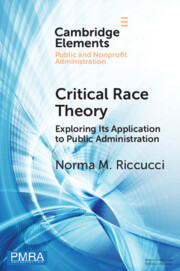Element contents
Critical Race Theory
Published online by Cambridge University Press: 21 February 2022
Summary
- Type
- Element
- Information
- Online ISBN: 9781009122986Publisher: Cambridge University PressPrint publication: 17 March 2022
References
- 14
- Cited by



